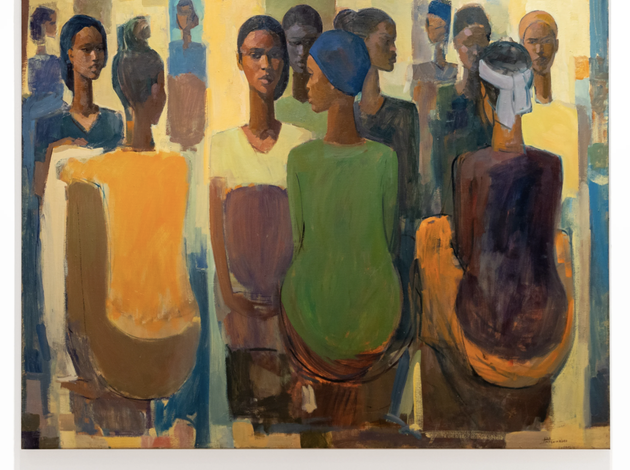Over the last decade Ethiopian artists have become more widely recognised by the global art market. Despite being historically overlooked, the country has a thriving art market – especially in the capital, Addis Ababa. Still, those working within the Ethiopian art market would be the first to admit that it hasn’t always been that way.
“When we launched, there was a distinct lack of Ethiopian art spaces – especially ones which actively engage with the wider international contemporary art world,” says Rakeb Sile, who co-founded the capital’s Addis Fine Art gallery alongside Mesai Haileleul in 2016. “After three years of art consulting, we decided to open a gallery emerging from a local space in the heart of Ethiopia's capital.”
The idea behind Addis was simple – to provide a platform for contemporary artists from Ethiopia and its diasporas. Now in their fourth year and working across both Addis Ababa and London, the pioneering gallery is an important voice not only in Ethiopian art but in art from the wider region, as well as the Ethiopian diaspora worldwide.
“I consider Addis Fine Art to be a regional specialist, where collectors can explore the diverse artistic practices from Ethiopia, and eventually the wider Horn of Africa region, in depth,” Rakeb explains. There’s no-one better to shed some light on Ethiopian art from a collector perspective – including everything from its historical groundings to the modernist-influenced practices which set the region’s art apart right now.

Artists from Ethiopia’s modernist era have been traditionally overlooked, and their importance to the nation’s art history has gone largely uncelebrated.Co-Founder, Addis Fine Art
The Geography
If you were drawing an artistic map of Ethiopia, all roads would lead to the formidable Allé School of Fine Arts and Design at Addis Ababa University. “It’s the engine behind many of the artists coming out of the country,” says Rakeb. “The school continues to deliver world class artists, most of whom are now being discovered both locally and abroad.”
While the school has been a major driving force in the success of many contemporary Ethiopian artists, institutions such as Addis are also contributing to a thriving visual arts scene in the country’s capital. “Despite Ethiopia having been historically sidelined, it has now really begun to find its voice,” Rakeb says. “And recent interest in the visual arts has brought more collectors and art enthusiasts to the scene.”
An influx of collectors has created a self-fulfilling prophecy – with more art interest comes more artists. Likewise, the growing success of Ethiopian artists abroad only takes the country’s own scene from strength to strength. “Artists are emerging from the local scene and making a name for themselves internationally,” Rakeb explains. “Then, the reverberations from their successes motivate the local scene.”
The History
“Ethiopia has a long and rich history moulded by the many religious beliefs found in the country,” Rakeb says. “All of which have all played an important role in our society and culture.” This abundance of beliefs has led to an eclectic art history, usually focused around the art found in religious texts or religious buildings.
“Historically, paintings were used to decorate places of worship with beautiful frescos and iconography,” Rakeb explains. “Drawing, paintings and calligraphy were expertly used in Christian Orthodox manuscripts.” According to Rakeb, the Ethiopian “medium of choice” has therefore always been painting.
As Ethiopian art developed, a modernist movement began in the country – yet there wasn’t always the gallery and collector infrastructure to publicise it. “Artists from Ethiopia’s modernist era have been traditionally overlooked, and their importance to the nation’s art history has gone largely uncelebrated,” Rakeb says.

[Tadesse Mesfin] is one of the figureheads of the Ethiopian modernist movement [and] a long-time educator at the Alle School. As a result, he has taught and influenced over half of our roster of artists.Co-Founder, Addis Fine Art
Some Names to Know
Rakeb cites Tadesse Mesfin as a key artist who embodies Addis Fine Art’s mission of uplifting important, unrepresented Ethiopian modernist voices. “Not only is he one of the figureheads of the Ethiopian modernist movement, but he’s also a long-time educator at the Alle School,” she says. “As a result, he has taught and influenced over half of our roster of artists.”
Mesfin’s influence looms large over contemporary Ethiopian art – as does the influence of other modernist artists like Lulseged Retta, whom Addis also works with. Both studied painting in the former USSR before returning to Ethiopia to perfect their own distinct styles.



